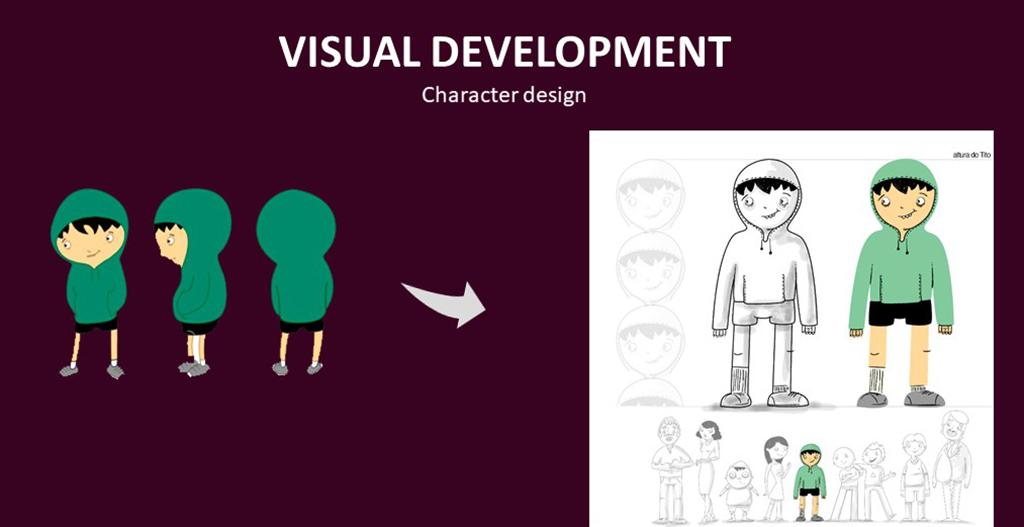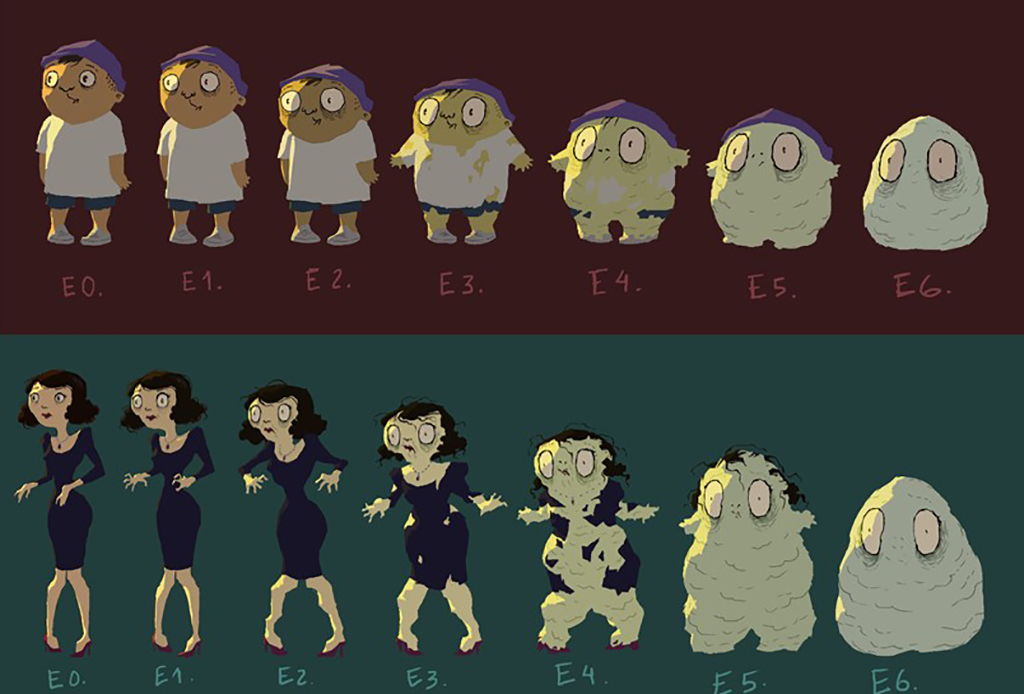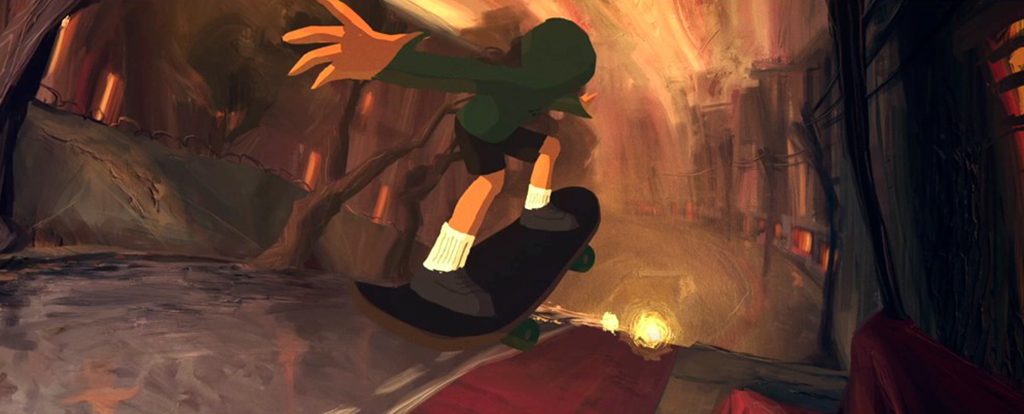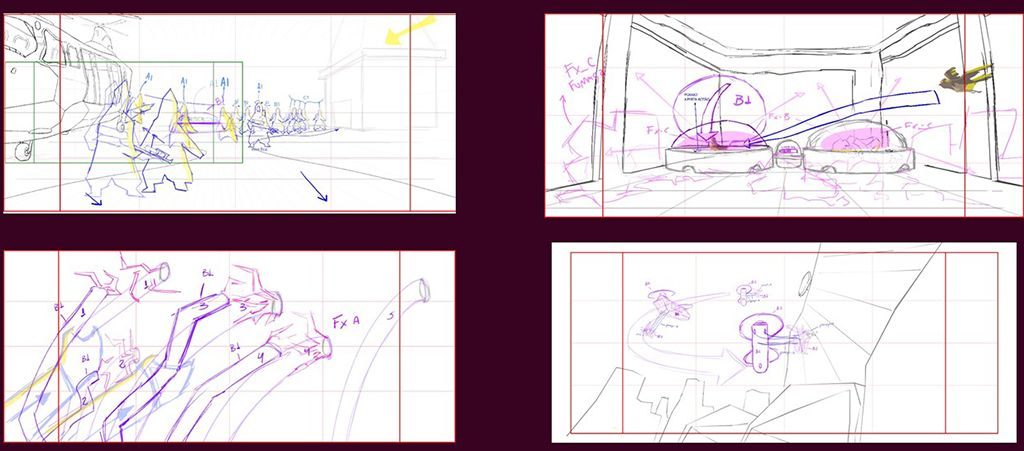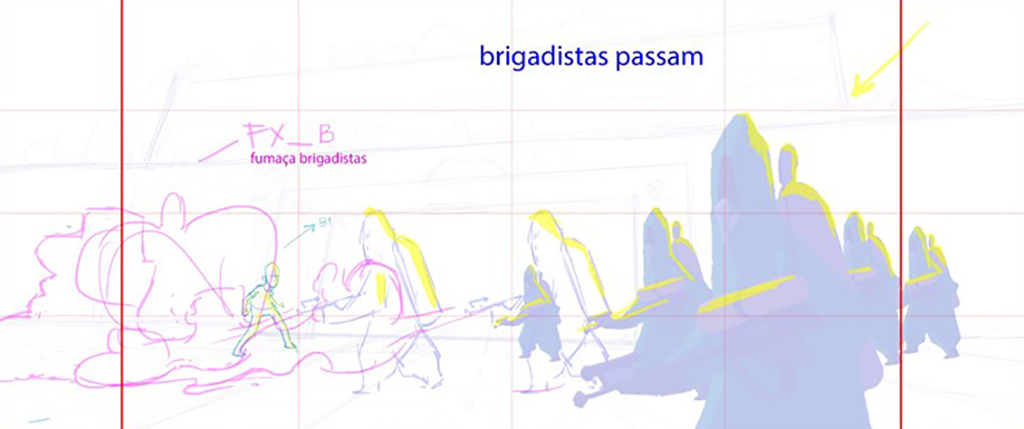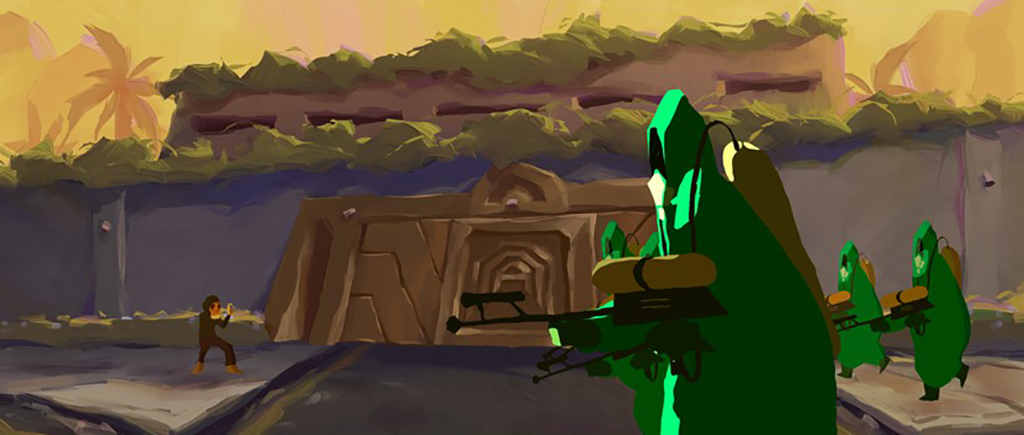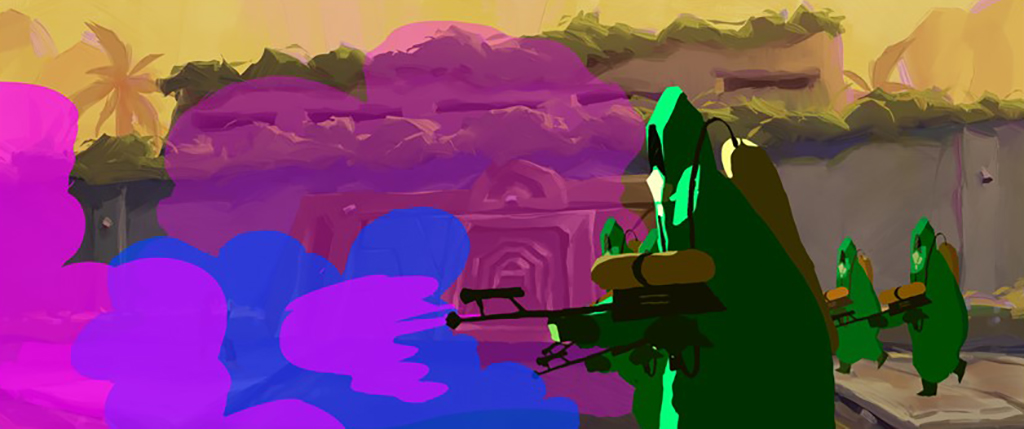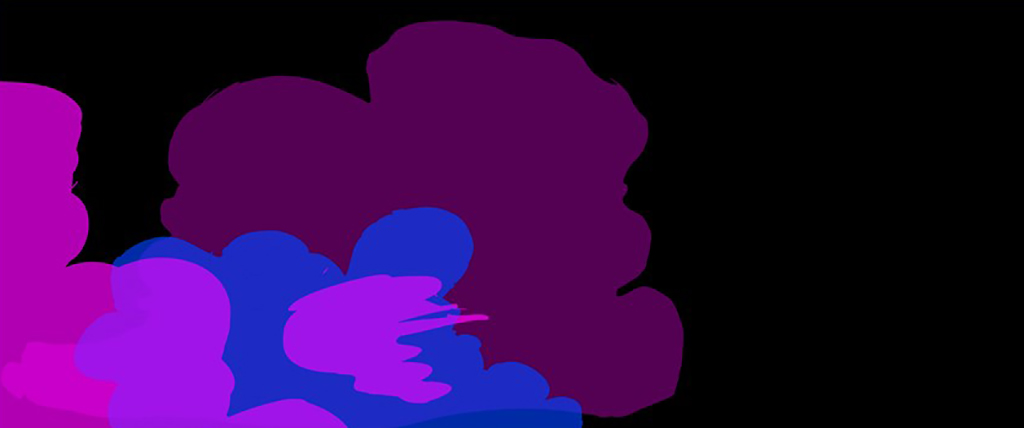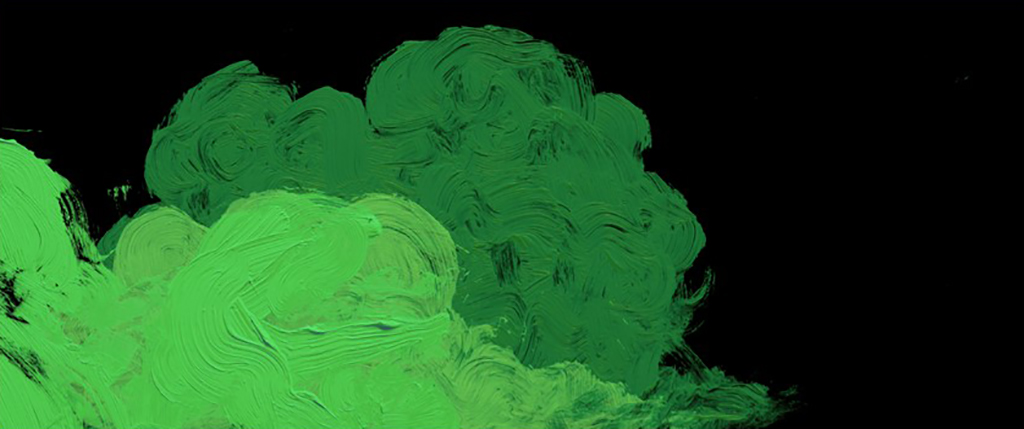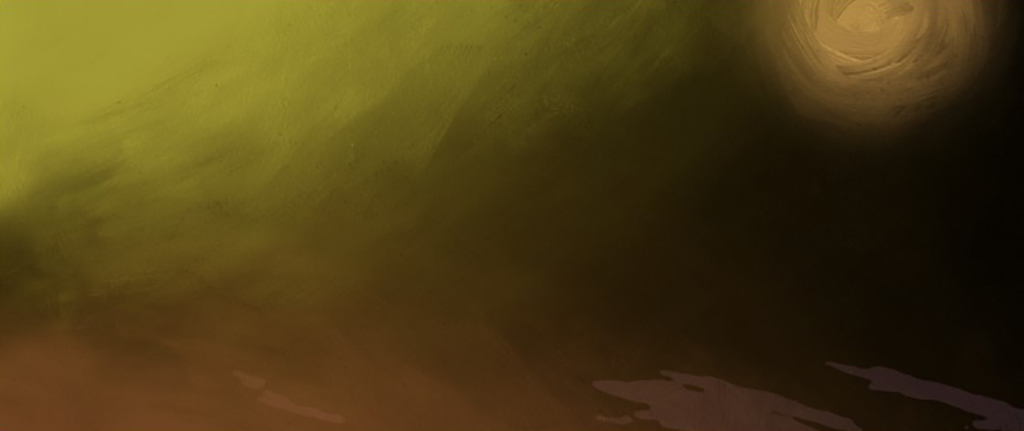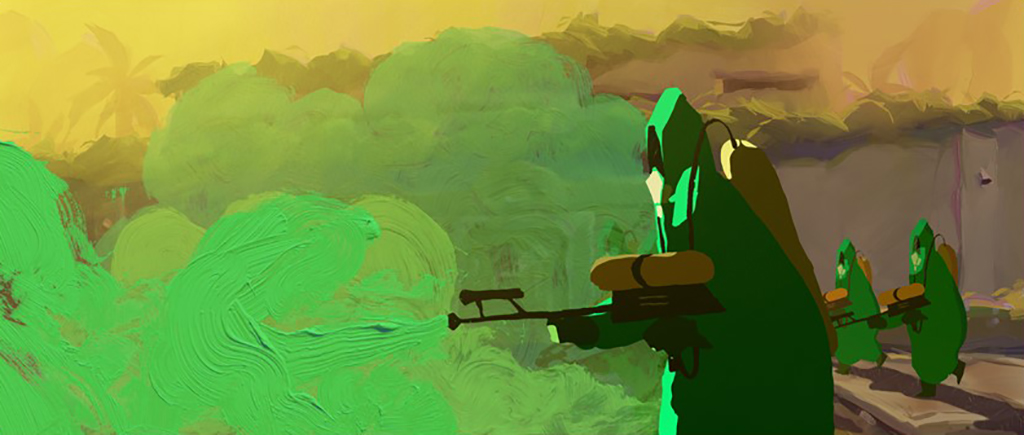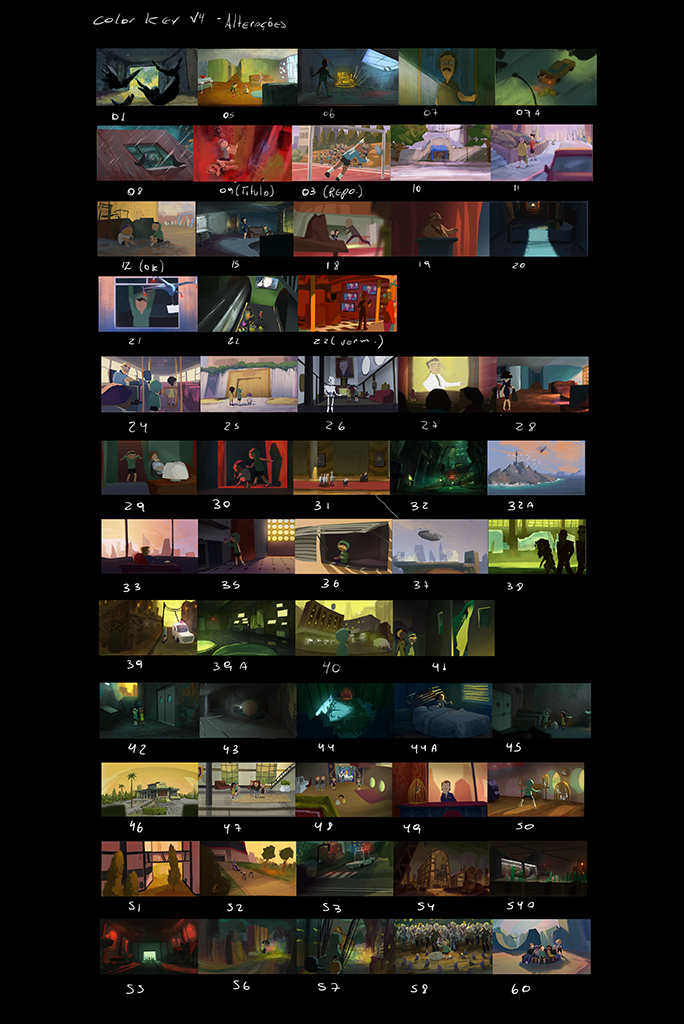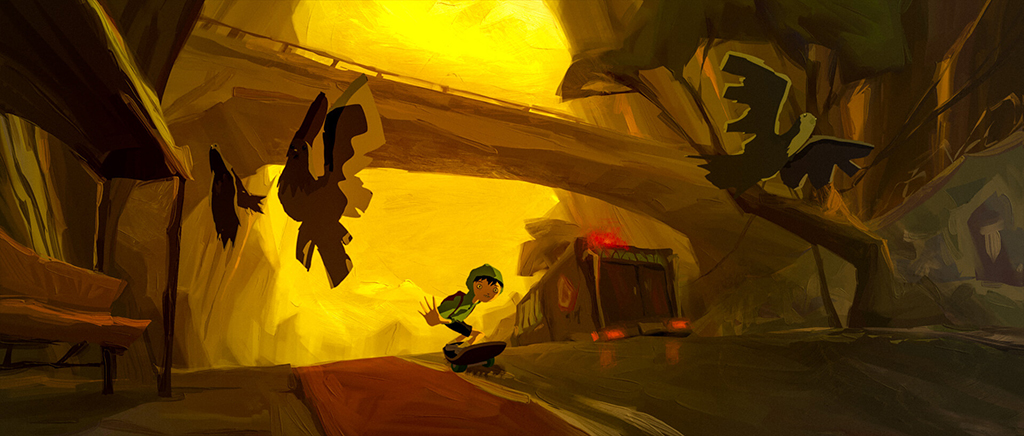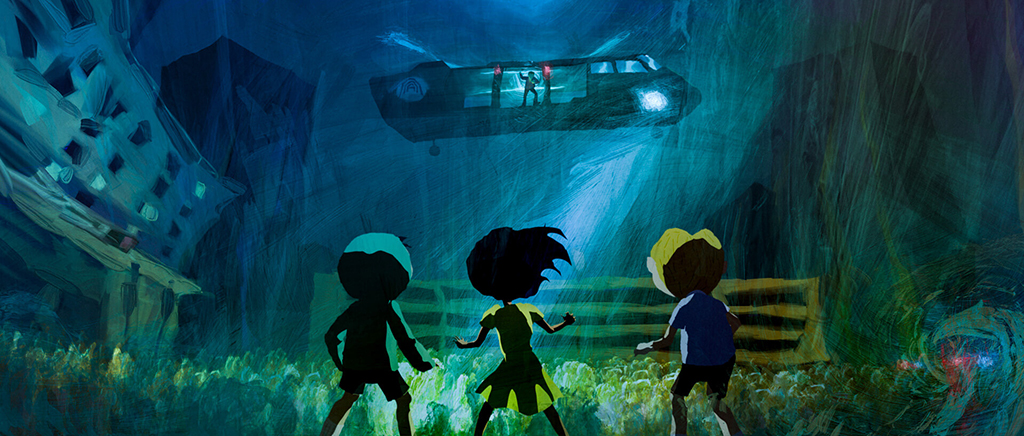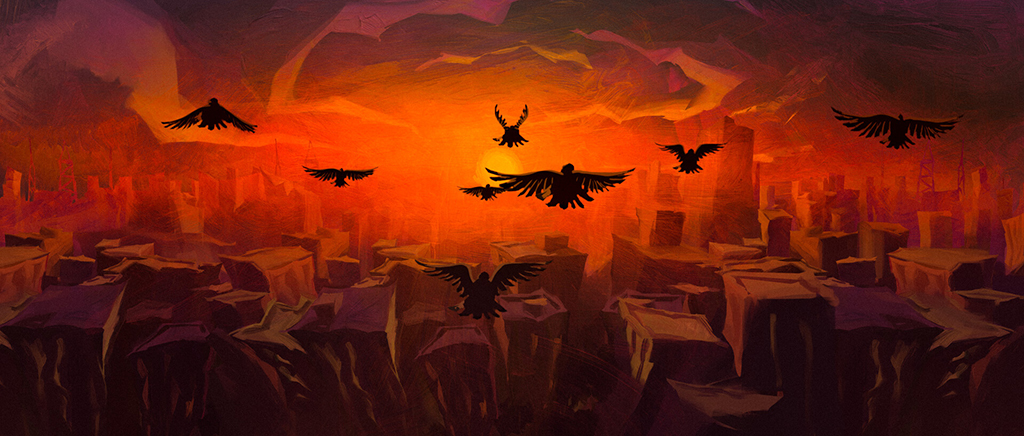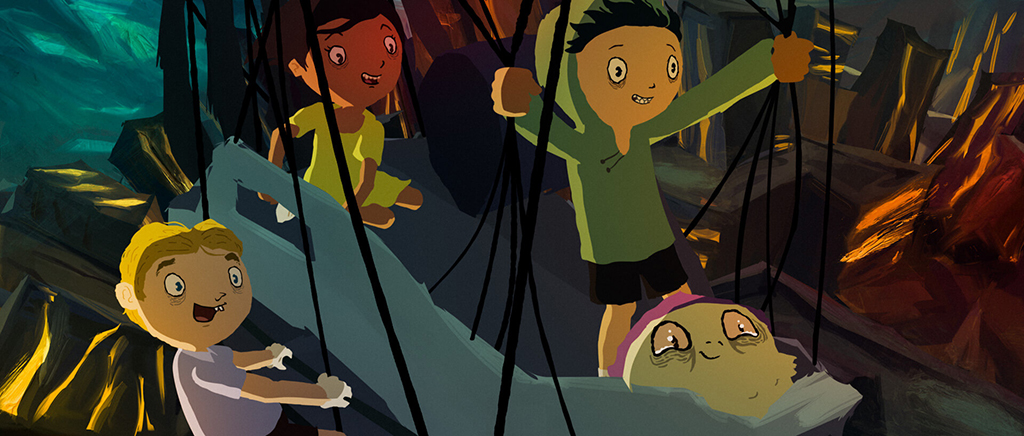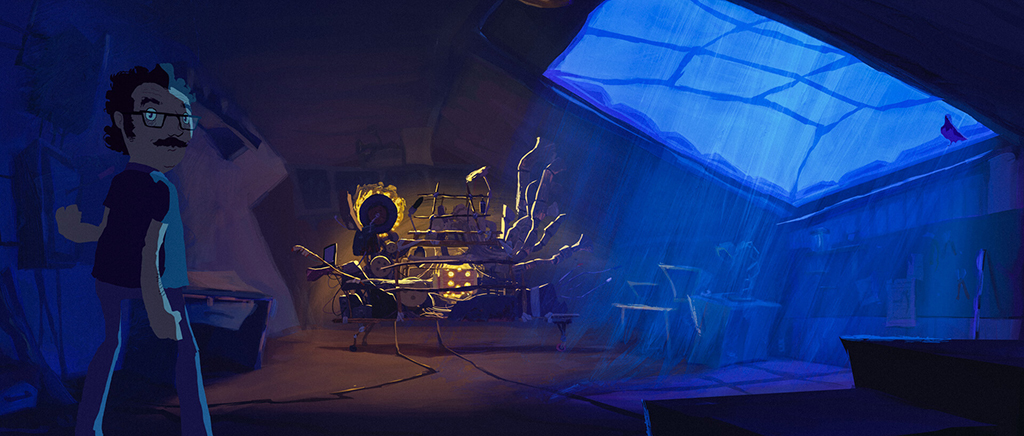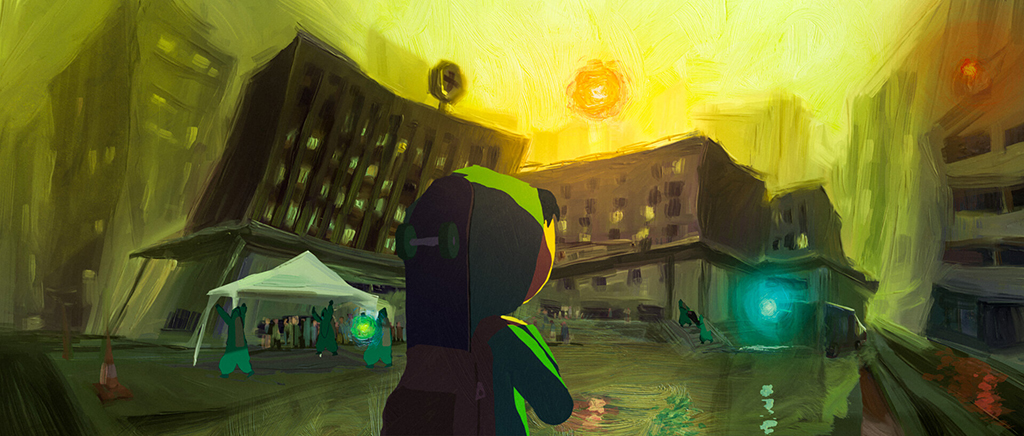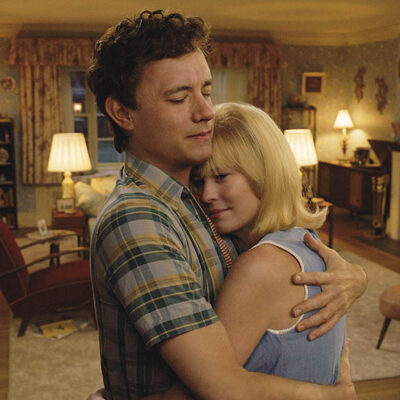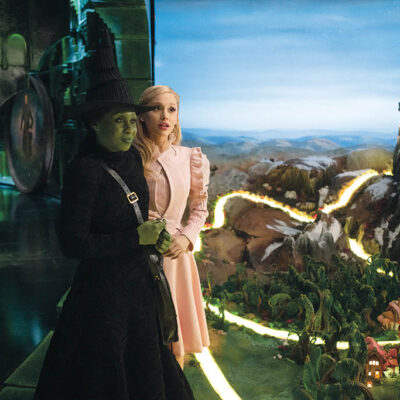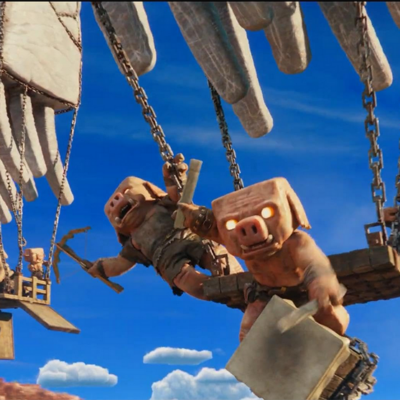The voice cast of Matheus Nachtergaele, Denise Fraga, Mateus Solano, Otávio Augusto and Pedro Henrique influenced the animation. “They bring all of this energy to the role,” observes Bitar. “We did the voices early, so this gave a boost to the animator’s work.” The villain inspired by Donald Trump before he became a presidential candidate went through some changes. “The actor playing Alaor did some improvisations that we used in the film,” reveals Steinberg. “They changed not only the animation but the story, too. His improvisations were better than the original text.”
Adjustments needed to be made to the process. “On a table, I made many sketches from different perspectives to try to understand how I could arrange a transition from one scene to another,” states Bitar. “If the camera movement was too fast it would get jittery.” The other issue was the reflection of lights when photographing the oil paint brushstrokes. “I found a way to photograph the oil painting without many reflections. It helped a lot. The painting process took two years. Every time I was painting something I got better texture, but sometimes I didn’t have the time to go back and change.” There were a few textures that would pixelate in certain conditions that needed to be cleaned up. “It was good that some of the things that Gabriel wanted to do in the beginning, we didn’t do then,” notes Steinberg, “because when he went back, his techniques, such as for smoke, were more developed.”
Ultrassom Music Ideas handled the sound design and created a library of sound effects. “From the start I knew how important the original score was going to be to transmit the fear,” states Steinberg. “We never used reference music in the development process. We started to develop the music with the same guys who did the Boy and the World while still working on the script.”
The pre-production process for animation has left a lasting impression. “If I ever do a live-action [film] again, I want to do an animatic first, because you get to see the film and say, ‘It works on the page, but it’s not working.’ Then you get to redo it before you actually do it.”
The social commentary was interwoven into the hero’s journey. “Sometimes a blockbuster like The Day After Tomorrow does a better job talking about global warming than An Inconvenient Truth by Al Gore. You’re having fun because it’s an adventure, and then you say, ‘Is this really happening? Let me check.’” Steinberg adds, “There was a concern about how far we could go with fear so that the target audience, which included six-year-olds, would still be able to watch it. We ran focus groups at the script stage and surprisingly they said, ‘Bring more fear!’”


